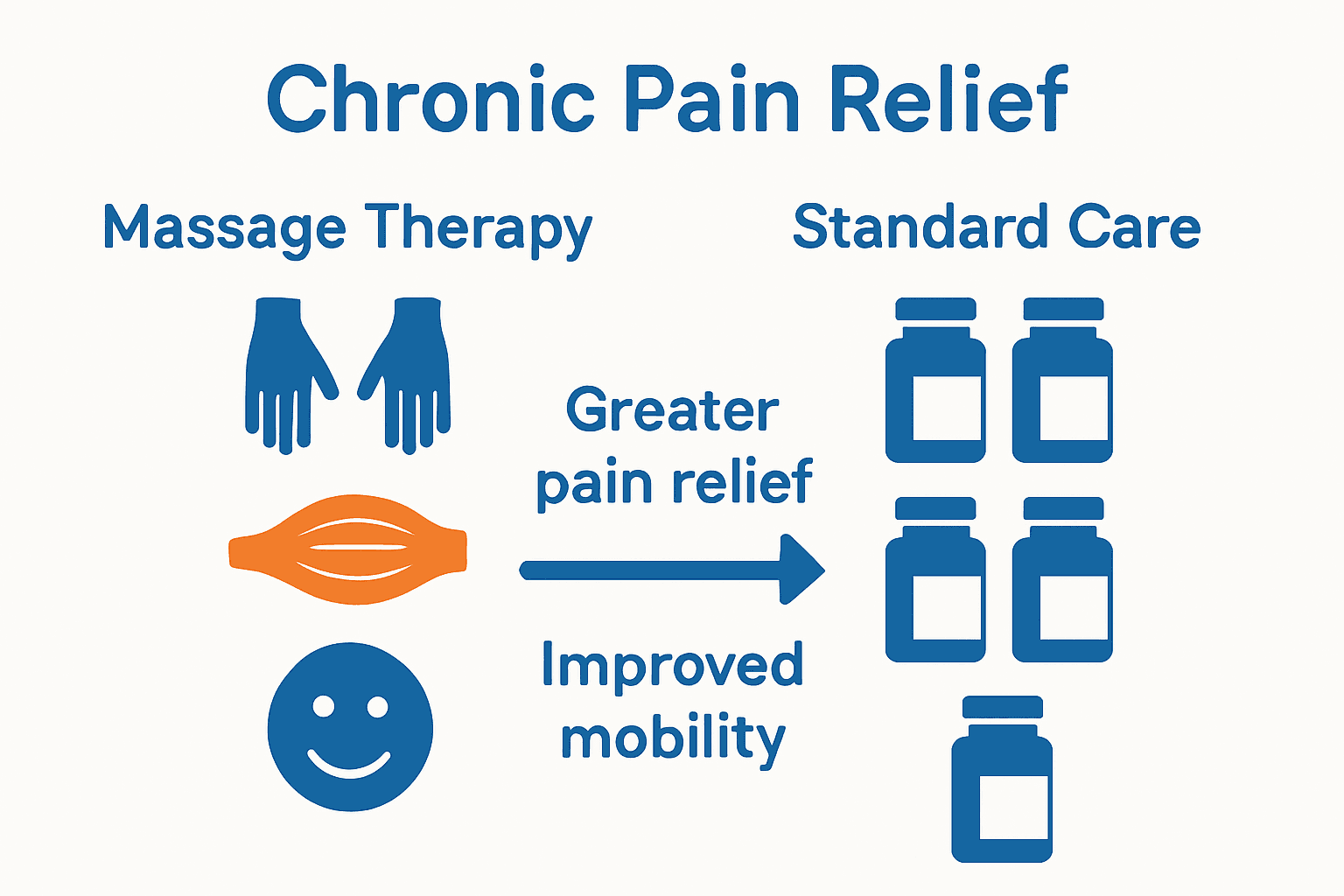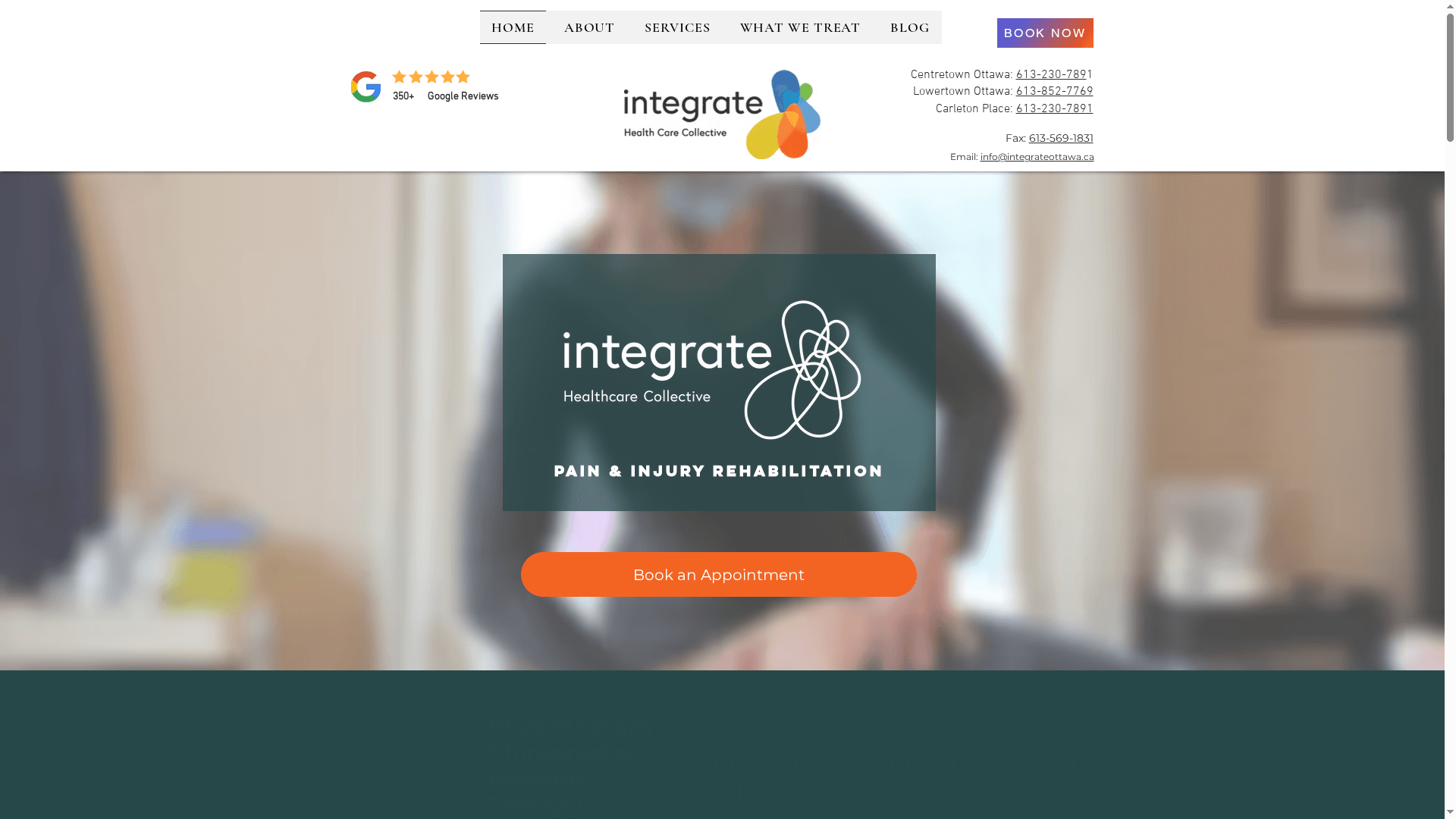Complete Guide to Choosing a Massage Therapist
- Nov 5
- 8 min read
Updated: Nov 6

Over 75 percent of Canadians report using massage therapy for pain relief or stress management at some point in their lives. Whether you are struggling with lingering muscle tension, chronic pain, or everyday stress, finding effective solutions can make all the difference in your quality of life. Understanding how massage therapy works and the specific benefits it offers can help you choose the right approach for your needs and feel more confident about your wellness journey.
Table of Contents
Key Takeaways
Point | Details |
Massage Therapy Benefits | Massage therapy promotes physical wellness by reducing pain, enhancing flexibility, and decreasing stress. It offers comprehensive benefits for both physical and mental health. |
Personalized Treatment | Each massage therapy session is tailored to individual patient needs, utilizing various techniques that target specific health concerns. Therapists assess medical history and current conditions for optimal results. |
Evidence-Based Effectiveness | Research supports massage therapy as a powerful approach for pain management and recovery, showing significant benefits compared to standard medical care. Deep tissue massage, in particular, demonstrates superior efficacy for chronic conditions. |
Safety Considerations | While generally safe, massage therapy has contraindications such as severe medical conditions or recent surgeries. Patients should consult healthcare providers before starting treatment to ensure it’s appropriate for their condition. |
What Is Massage Therapy and How It Helps
Massage therapy is a professional healthcare practice that involves strategic manipulation of soft body tissues to promote healing, reduce pain, and enhance overall physical wellness. According to the Canadian Massage Therapy Association, massage therapy encompasses the assessment and treatment of the musculoskeletal system through specialized manual techniques designed to alleviate physical dysfunction, injury, and chronic pain.
At its core, massage therapy works by applying targeted pressure, stretching, and movement to muscles, tendons, ligaments, and connective tissues. As WebMD explains, these manual techniques help reduce stress, ease muscle tension, and promote relaxation and overall well-being. The therapeutic approach goes far beyond simple relaxation, offering measurable benefits for both physical and mental health.
The key benefits of massage therapy include:
Reducing muscle tension and pain
Improving blood circulation
Enhancing flexibility and range of motion
Supporting injury recovery and rehabilitation
Decreasing stress and promoting mental relaxation
Supporting immune system function
Massage therapists use various specialized techniques tailored to individual patient needs. These might include deep tissue massage, Swedish massage, sports massage, or therapeutic trigger point work. By understanding each patient’s unique physical condition, therapists can develop personalized treatment plans that target specific muscular issues and support holistic healing.

Integrate Healthcare Ottawa offers comprehensive massage therapy services designed to address your specific health and wellness goals.
Different Types of Massage Therapy Explained
Massage therapy isn’t a one-size-fits-all treatment. WebMD reveals there are approximately 80 different massage therapy styles, each designed to address unique health concerns and individual patient needs. This diversity allows therapists to create personalized treatment approaches that target specific physical and physiological challenges.
Some of the most common massage therapy techniques include:
Here’s a comparison of popular massage therapy techniques:
Technique | Key Focus Areas | Typical Benefits |
Swedish Massage | Full body Superficial muscles | Relaxation Stress reduction |
Deep Tissue Massage | Deep muscles Connective tissue | Chronic pain Muscle tension |
Sports Massage | Sports injuries Active muscles | Injury prevention Performance |
Trigger Point | Tight muscle fibres | Pain relief Improved mobility |
Myofascial Release | Fascia Connective tissue | Flexibility Tension reduction |
Swedish Massage: A gentle, full-body technique using long strokes and kneading to promote relaxation
Deep Tissue Massage: Targets deeper muscle and connective tissue layers to address chronic pain and tension
Sports Massage: Focuses on preventing and treating sports-related injuries, enhancing athletic performance
Trigger Point Therapy: Concentrates on releasing specific areas of tight muscle fibers
Myofascial Release: Works on releasing tension in the connective tissue surrounding muscles
Each massage style requires specialized training and understanding of human anatomy. Professional massage therapists carefully assess a patient’s physical condition, medical history, and specific health goals before recommending a particular technique. For instance, someone recovering from a sports injury might benefit more from a targeted sports massage, while an individual experiencing high stress might find greater relief through a relaxing Swedish massage.
For those seeking personalized massage therapy tailored to their specific needs, Integrate Healthcare Ottawa’s massage therapy FAQ offers comprehensive insights into how different techniques can support your unique wellness journey. Understanding these variations helps patients make informed decisions about their therapeutic approach and select the most appropriate massage style for their health objectives.
Evidence-Based Benefits for Pain and Recovery
Massage therapy has emerged as a powerful, scientifically-validated approach to managing pain and supporting recovery. Research provides compelling evidence of its therapeutic potential. PubMed published a study comparing therapeutic and deep tissue massage for chronic low back pain, revealing that both methods significantly reduced pain and disability, with deep tissue massage showing particularly impressive results.
The pain management benefits of massage therapy are multifaceted:
Reduces muscle tension and inflammation
Improves blood circulation
Increases range of motion
Releases endorphins that naturally combat pain
Helps break down scar tissue
Supports faster recovery from injuries
Additional research from PubMed evaluated structural and relaxation massage techniques for chronic low back pain, demonstrating that both approaches were substantially more effective than standard care in reducing pain and improving overall physical function. This scientific validation highlights massage therapy’s potential as a non-invasive, holistic treatment strategy for individuals struggling with persistent pain conditions.
For those experiencing specific pain challenges, how we treat back pain offers targeted insights into how professional massage therapy can be customized to address individual musculoskeletal issues. By understanding the evidence-based benefits, patients can make informed decisions about incorporating massage therapy into their comprehensive pain management and recovery plan.
Massage Therapy Process: What to Expect
WebMD explains that during a massage therapy session, a trained professional manipulates soft tissues using specialized techniques designed to alleviate stress, reduce muscle tension, and promote overall relaxation. This process is far more structured and intentional than most people realize, involving a comprehensive approach to addressing individual physical needs.
A typical massage therapy session typically follows these stages:
Initial Health Consultation
Review of medical history
Discussion of current physical concerns
Identification of specific treatment goals
Pre-Massage Assessment
Evaluation of muscle tension
Identification of areas requiring focused attention
Determination of appropriate massage techniques
Treatment Session
Application of selected massage techniques
Adjusting pressure and approach based on patient response
Addressing specific muscle groups and tension points
Prior to your first session, therapists will conduct a thorough assessment to customize the treatment. They’ll ask about your medical history, current physical conditions, stress levels, and specific areas of discomfort. This personalized approach ensures that the massage therapy addresses your unique physiological needs and health objectives.
For individuals interested in specialized massage approaches, explained trigger point therapies can provide additional insights into how targeted massage techniques can address specific muscular challenges. Understanding the process helps patients feel more comfortable and prepared for their massage therapy experience, transforming it from a mysterious treatment to a clear, therapeutic intervention.
Safety, Risks, and Contraindications in Canada
WebMD emphasizes that while massage therapy is generally safe, it does come with potential risks and specific conditions where caution or complete avoidance is necessary. Understanding these safety considerations is crucial for patients to make informed decisions about their massage therapy treatment.
The potential risks and contraindications in massage therapy include:
Medical Conditions to Avoid Massage:
Deep vein thrombosis
Severe osteoporosis
Active infections
Open wounds or skin infections
Recent surgeries
Uncontrolled high blood pressure
Temporary side effects that patients might experience include:
Mild soreness
Temporary bruising
Slight muscle tenderness
Fatigue
Temporary increase in pain before improvement
Professional massage therapists are trained to conduct comprehensive health screenings before treatment. They will carefully review your medical history, current health status, and any existing conditions to determine whether massage therapy is appropriate and safe for you. This thorough assessment helps prevent potential complications and ensures a therapeutic experience tailored to your individual health needs.
For individuals with specific health concerns or complex medical histories, how we treat headaches provides additional context on how healthcare professionals approach treatment with safety as the primary consideration. Always consult with your healthcare provider before beginning any new therapeutic intervention, especially if you have pre-existing health conditions.
Comparing Massage Therapy to Alternative Treatments
Research provides compelling evidence for massage therapy’s effectiveness compared to other treatment approaches. PubMed conducted a randomized controlled trial revealing that both structural and relaxation massage techniques were significantly more effective than standard medical care in treating chronic low back pain, positioning massage as a powerful alternative treatment option.
Comparative Treatment Advantages of Massage Therapy:
Less invasive than surgical interventions
Minimal to no pharmaceutical side effects
Holistic approach targeting root causes
Promotes natural healing mechanisms
Customizable to individual patient needs
Lower long-term treatment costs
Further research from PubMed suggests that deep tissue massage may offer superior pain reduction compared to traditional therapeutic massage, particularly for chronic low back pain. This nuanced approach demonstrates massage therapy’s potential to provide targeted, personalized treatment strategies that can outperform conventional medical approaches.

For patients seeking comprehensive insights into treatment options, chiropractor or massage for back pain provides a detailed exploration of how different therapeutic approaches can complement each other. Understanding these alternatives empowers patients to make informed decisions about their healthcare, recognizing massage therapy as a scientifically supported, patient-centered treatment modality.
Discover How Massage Therapy Can Transform Your Well-Being
If you are struggling with persistent muscle tension, chronic pain, or the challenge of recovering from an injury, massage therapy offers a proven path to relief and renewal. This article highlights key benefits such as reducing pain, improving flexibility, and promoting mental relaxation — all essential for regaining control over your health and feeling like yourself again. At Integrate Healthcare Ottawa, our team understands these challenges and uses evidence-based massage techniques tailored to your unique needs.

Start your journey toward lasting relief today. Visit our massage therapy FAQ to learn how different approaches can support your goals and explore how we treat back pain with customized care plans. Don’t wait for pain to limit your life. Connect with us now at Integrate Healthcare Ottawa to book your appointment and experience the difference of expert, compassionate care.
Frequently Asked Questions
What are the main benefits of massage therapy?
Massage therapy helps reduce muscle tension and pain, improves blood circulation, enhances flexibility, supports injury recovery, decreases stress, and boosts immune system function.
How does a massage therapy session typically work?
A massage therapy session usually involves an initial health consultation, a pre-massage assessment to identify areas of focus, and a treatment session where techniques are applied based on patient needs.
What are the different types of massage techniques available?
Popular massage techniques include Swedish massage for relaxation, deep tissue massage for chronic pain, sports massage for injury prevention, trigger point therapy for muscle tightness, and myofascial release for tension in connective tissues.
Are there any risks associated with massage therapy?
While massage therapy is generally safe, it may not be suitable for individuals with conditions such as deep vein thrombosis, osteoporosis, active infections, or recent surgeries. It’s essential to have a thorough health assessment before starting treatment.
Recommended

Comments